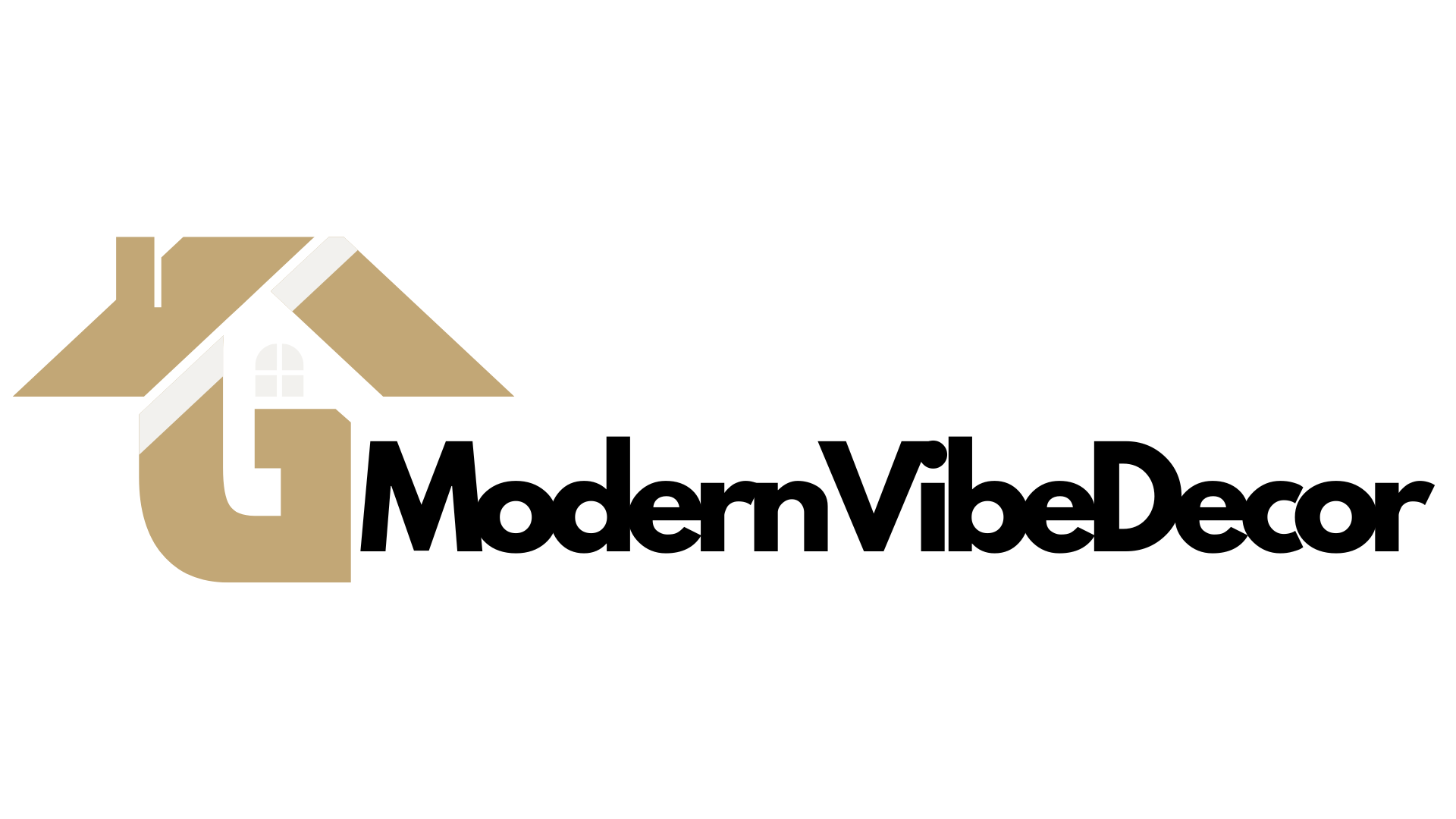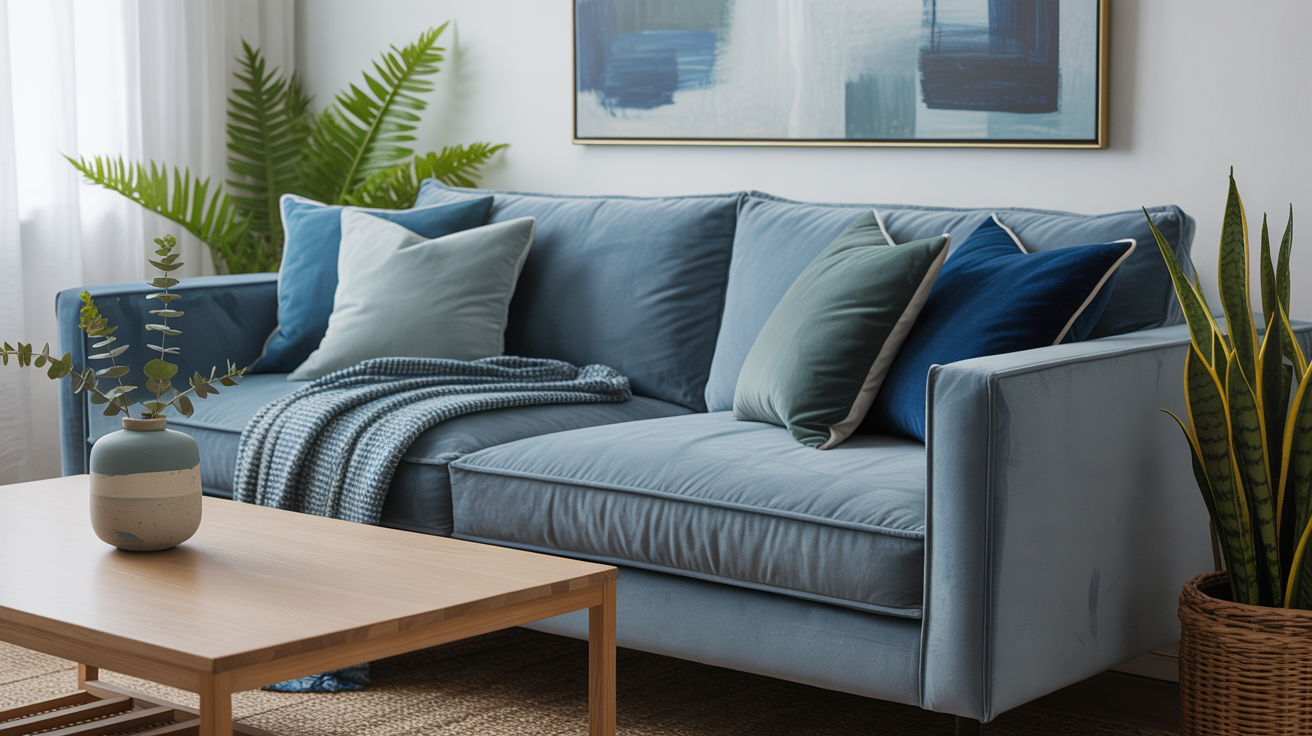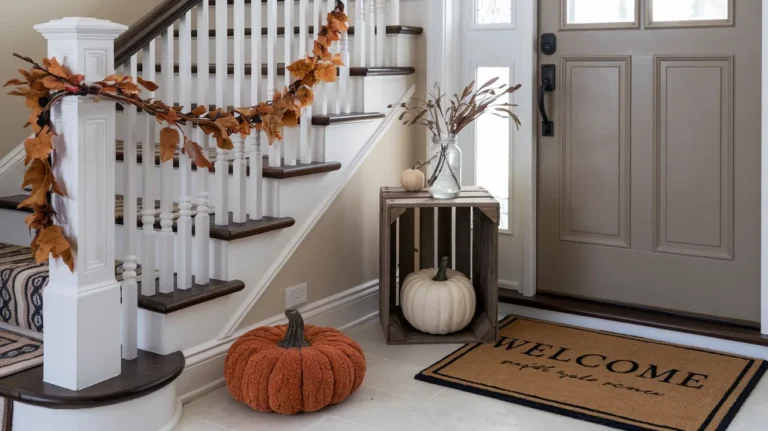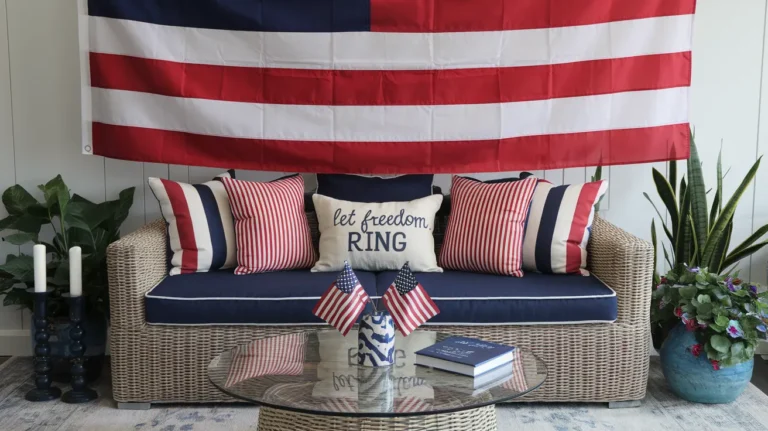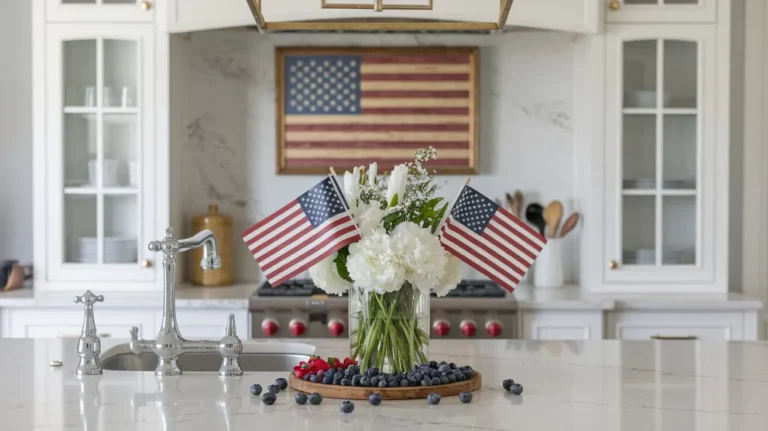Blue might just be the most versatile color in the design world. It can be serene and calming or bold and dramatic. It works in traditional spaces and ultramodern ones. It pairs beautifully with practically every other color. And unlike some trendy hues that quickly feel dated (I’m looking at you, avocado green), blue has true staying power.
I’ve been slightly obsessed with blue interiors lately, and after hours of Pinterest deep-dives and countless design magazine flip-throughs, I’m convinced that a blue living room might be the smartest color choice you can make. Whether you’re looking to create a peaceful retreat or a statement space that wows your guests, blue delivers.
Let’s dive into some gorgeous blue living room ideas across different design styles that might just inspire your next refresh.
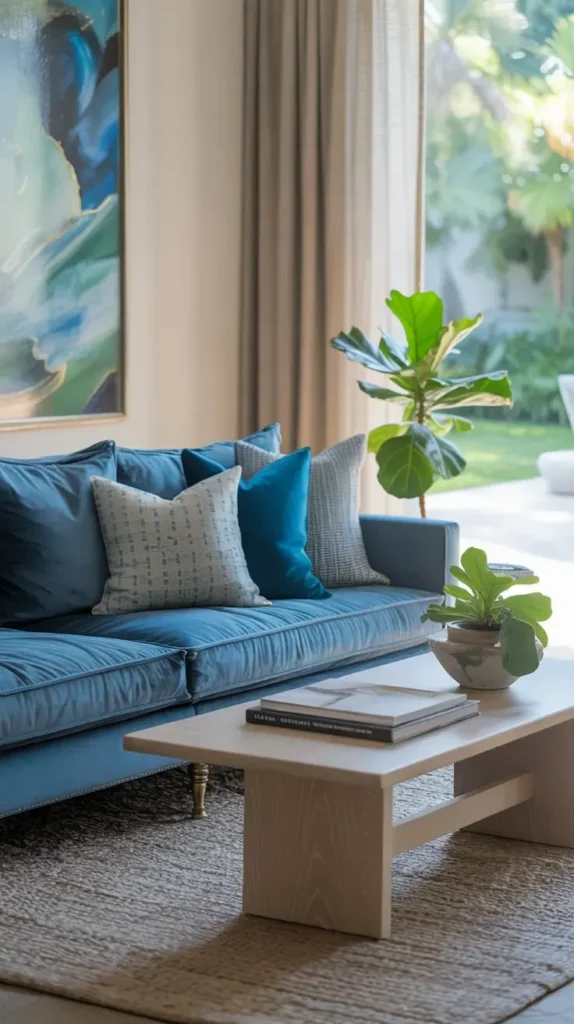
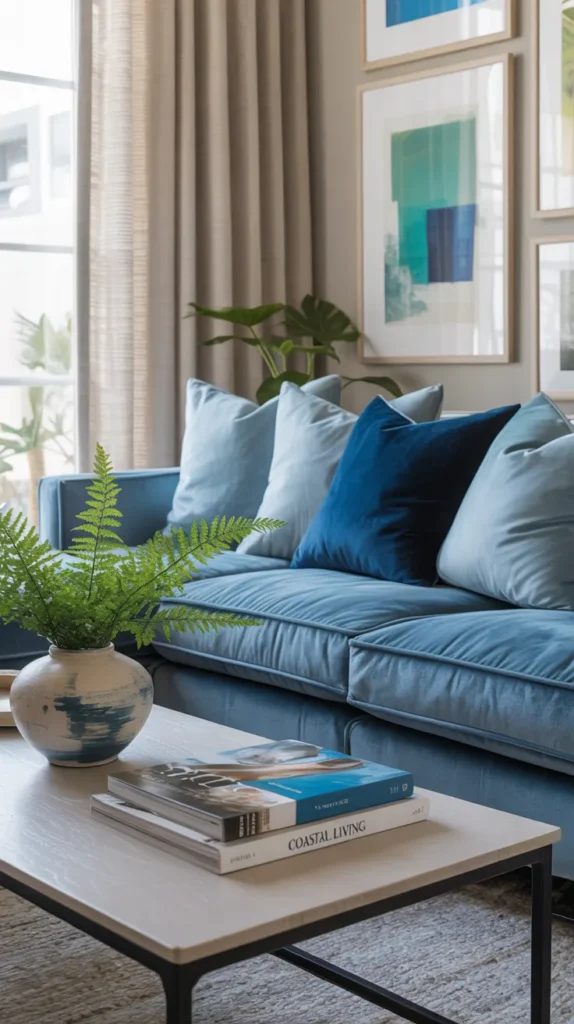
Why Blue Is the Ultimate Living Room Color
Before we get into specific styles, let’s talk about why blue works so beautifully in living spaces. Unlike some colors that can feel too energetic (hello, red) or too specific in their mood, blue is incredibly adaptable.
Blue living rooms offer:
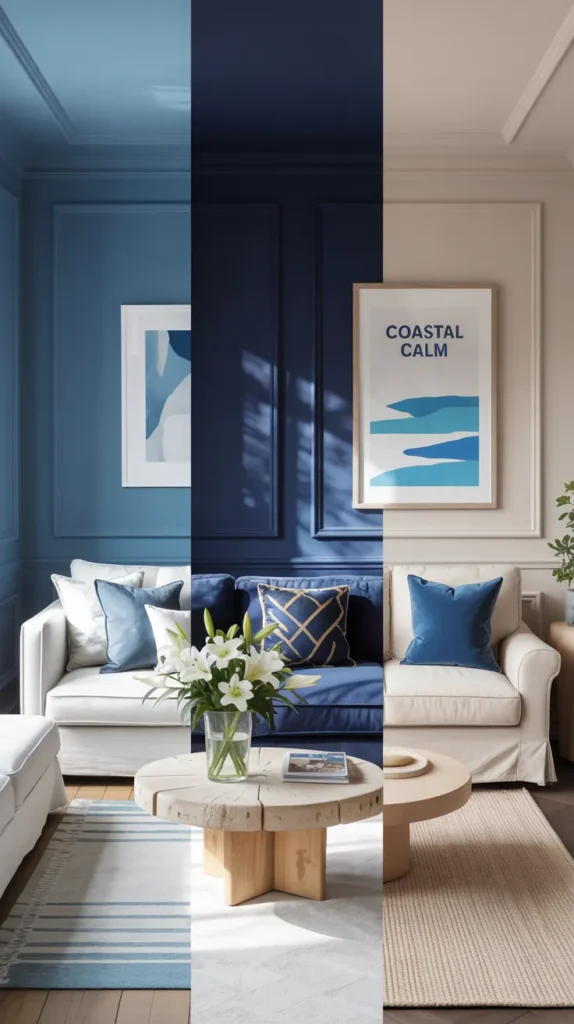
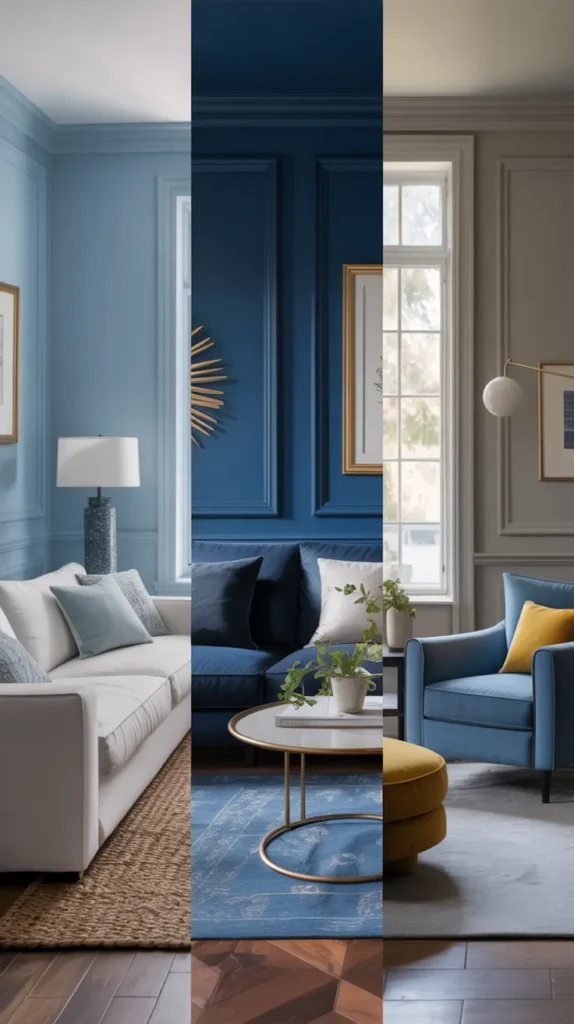
- Versatility – From barely-there powder blue to dramatic navy, the range is endless
- Psychological benefits – Blue is proven to reduce stress and promote calmness
- Timelessness – While color trends come and go, blue remains consistently popular
- Adaptability – Blue works with virtually any design style or era
I’ve found that blue is also incredibly forgiving as a decorating color. Make a mistake with a bold yellow or purple, and everyone notices. Blue, on the other hand, tends to look intentional even when you’re still figuring things out. It’s the design equivalent of a good friend who makes you look better just by standing next to you.
Easy Ways to Introduce Blue Into Your Living Room
Not ready to paint all your walls navy? No problem. One of the best things about blue is how easily you can introduce it in small doses or go all-in, depending on your comfort level.
Here are some approachable ways to bring blue into your living space:
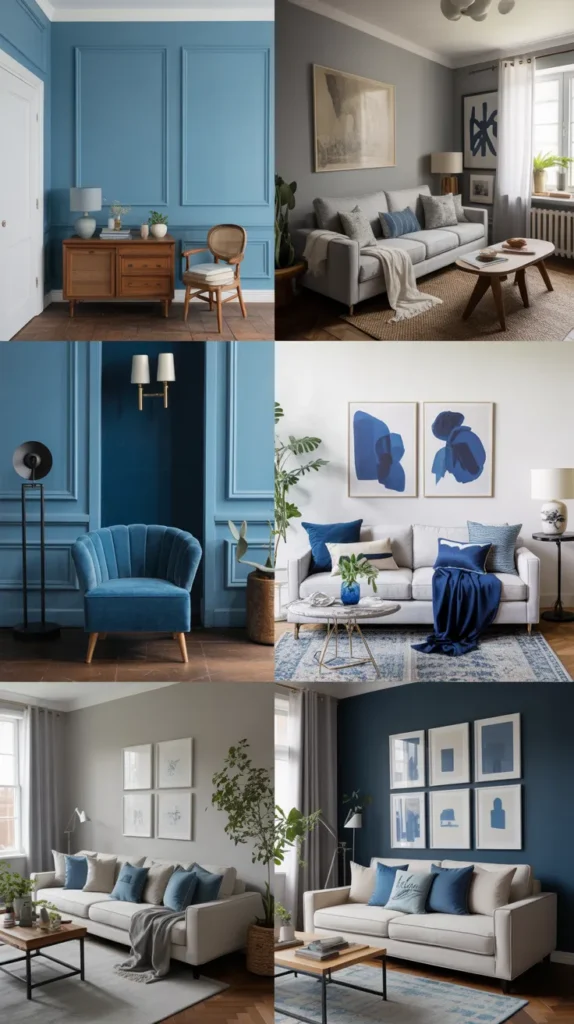
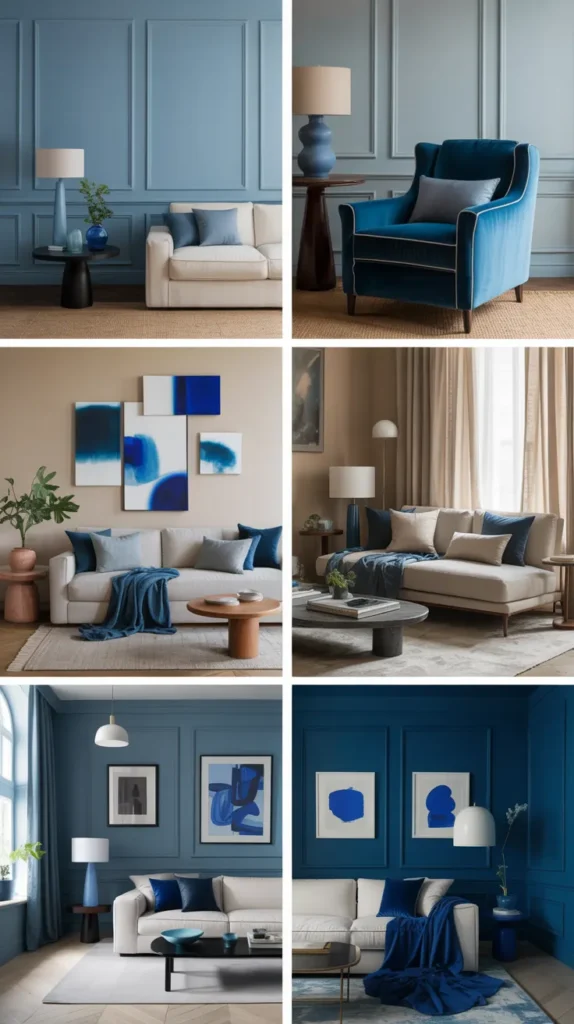
Start with the walls: A blue accent wall makes an immediate impact while requiring less commitment than painting the entire room. Light blues create an airy, expansive feeling, while deeper blues (navy, indigo) create a cozy, enveloping atmosphere.
Focus on furniture: A blue sofa or armchair instantly becomes a focal point in your living room. The best part? It’s surprisingly versatile—blue upholstery tends to function almost like a neutral, pairing easily with a range of other colors.
Layer in textiles: Perhaps the lowest-commitment way to experiment with blue is through textiles. Blue throw pillows, area rugs, curtains, or throws can transform a space without requiring any painting or furniture purchases.
Accessorize thoughtfully: Blue vases, artwork, or decorative objects can add interest to your space while tying everything together. These smaller elements are perfect for testing out bolder blues before making bigger changes.
Mix your blues: Don’t feel limited to just one shade of blue. Some of the most interesting blue living rooms incorporate multiple tones—perhaps a navy sofa with light blue pillows and a medium blue area rug. The interplay between different blues adds depth and sophistication.
Pro tip: If you’re new to decorating with blue, start with a blue that has some gray in it. These muted, grayed-out blues tend to be more versatile and less likely to clash with existing decor elements.
Blue Boho Chic: Free-Spirited and Eclectic
Bohemian style is all about personal expression, layered textures, and a collected-over-time feel. When done in blue, it creates a space that feels both relaxed and visually interesting.
A blue boho living room often features:
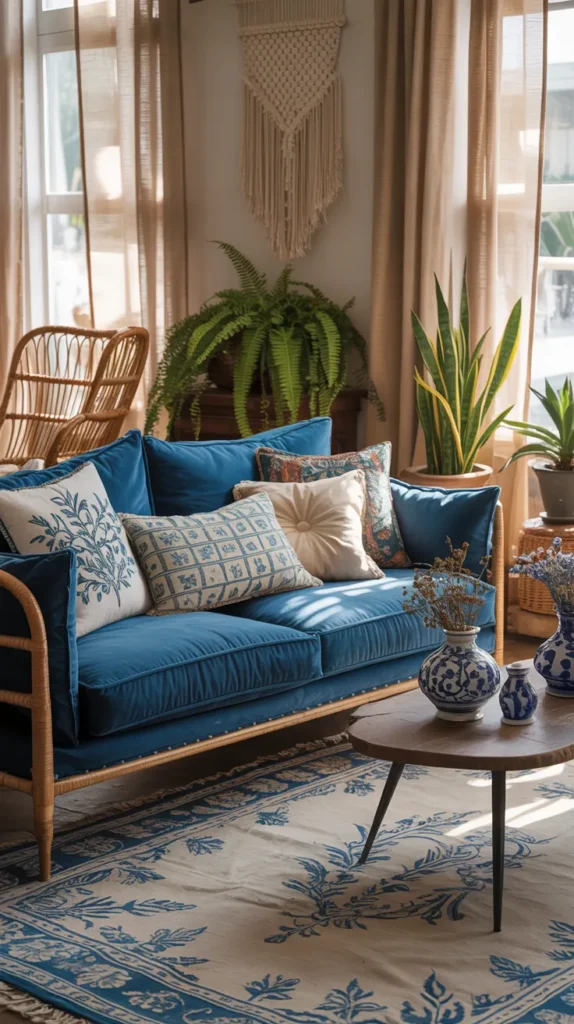
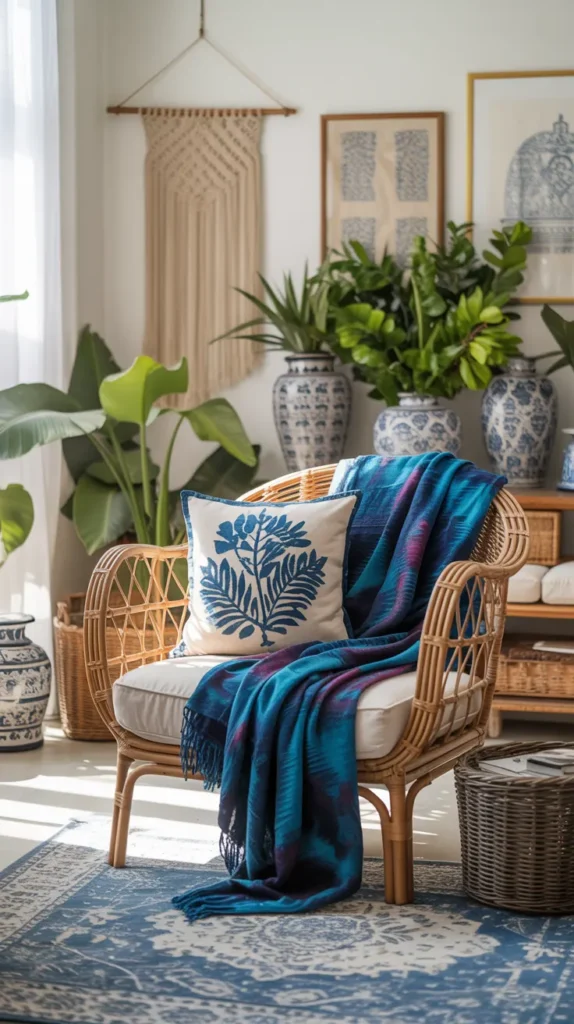
- Multiple patterns mixing harmoniously (ikats, block prints, geometrics)
- Varied textures from natural materials (jute, rattan, cotton, wool)
- Layered textiles like indigo-dyed fabrics and hand-knotted blue rugs
- Plants and natural elements that complement the blue tones
- Global influences from cultures where blue is prominent (Mediterranean, North African)
What I love about blue boho spaces is their lived-in, personal quality. Nothing feels too precious or perfect. A worn indigo throw draped casually over a chair, an array of blue and white ceramics collected from travels, or faded blue pillows with interesting textures all contribute to this relaxed vibe.
For a blue boho living room that feels authentic rather than contrived, focus on collecting pieces over time that speak to you personally. The patina and history in items like vintage indigo textiles bring a depth that brand-new pieces simply can’t match.
Blue Midcentury Modern: Clean Lines Meet Cool Tones
Midcentury modern style and blue are a match made in design heaven. The clean lines and organic shapes of midcentury furniture provide the perfect canvas for showcasing blue in all its glory.
In a blue midcentury modern living room, look for:
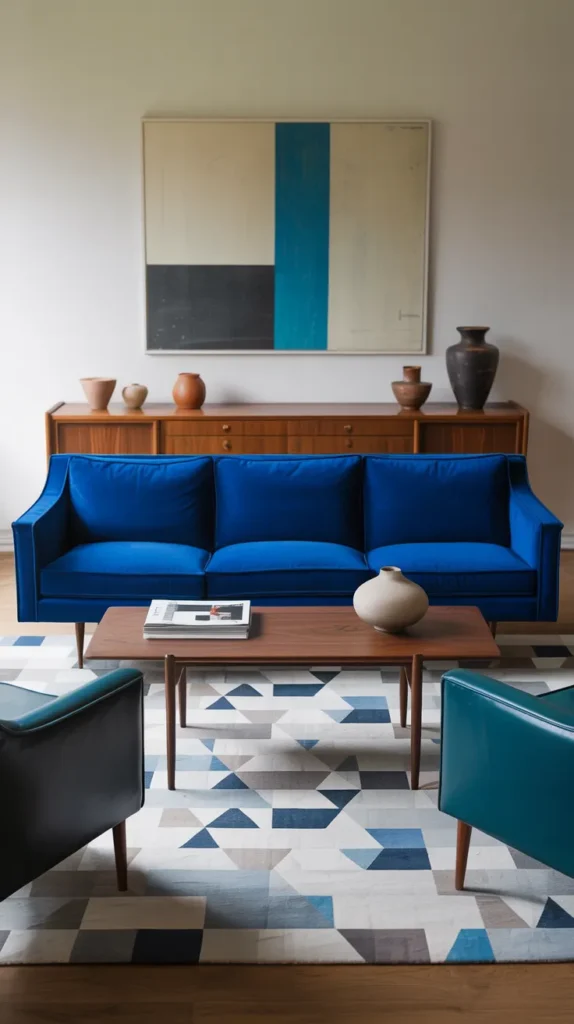
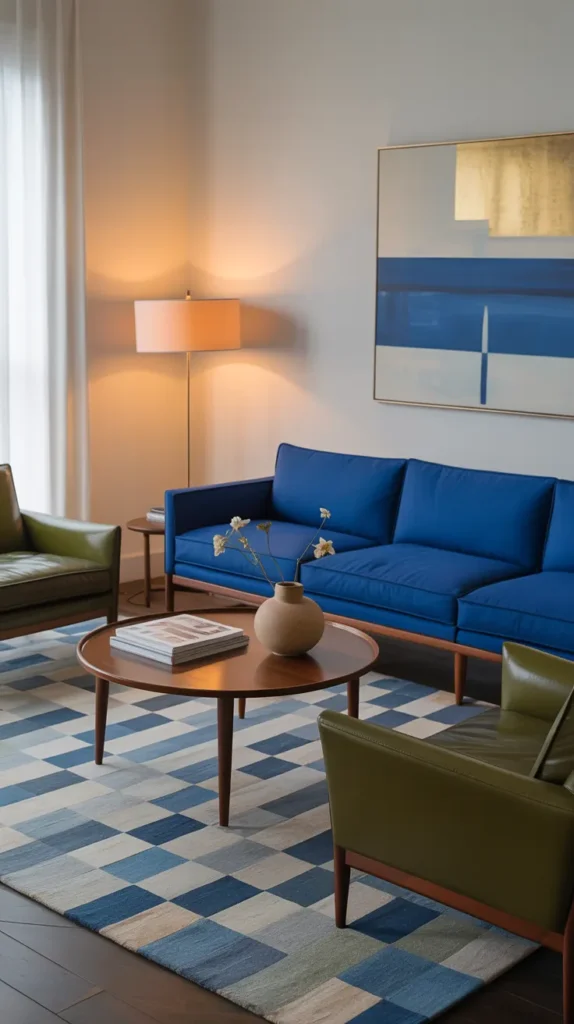
- A statement blue sofa with the characteristic clean lines and tapered legs
- Iconic midcentury chair silhouettes upholstered in complementary blue tones
- Geometric patterns that incorporate blue alongside other midcentury colors
- Wood tones (particularly walnut and teak) that contrast beautifully with blue
- Carefully curated blue accessories that maintain the “less is more” midcentury aesthetic
I’m particularly fond of how blue updates midcentury style, preventing it from feeling like a time capsule. A classic midcentury silhouette in a contemporary blue fabric feels both respectful of the era and thoroughly modern.
For a successful blue midcentury space, balance is key. Too much blue can overwhelm the important wood elements that define midcentury style. Consider a bold blue sofa as your main color statement, then use more restrained blue touches elsewhere so the beautiful wood tones can shine.
Blue Maximalist: Bold, Beautiful, and Unapologetic
If “less is more” has never been your motto, a blue maximalist living room might be your perfect match. This style embraces abundance, pattern, and the joy of surrounding yourself with things you love.
A blue maximalist living room celebrates:
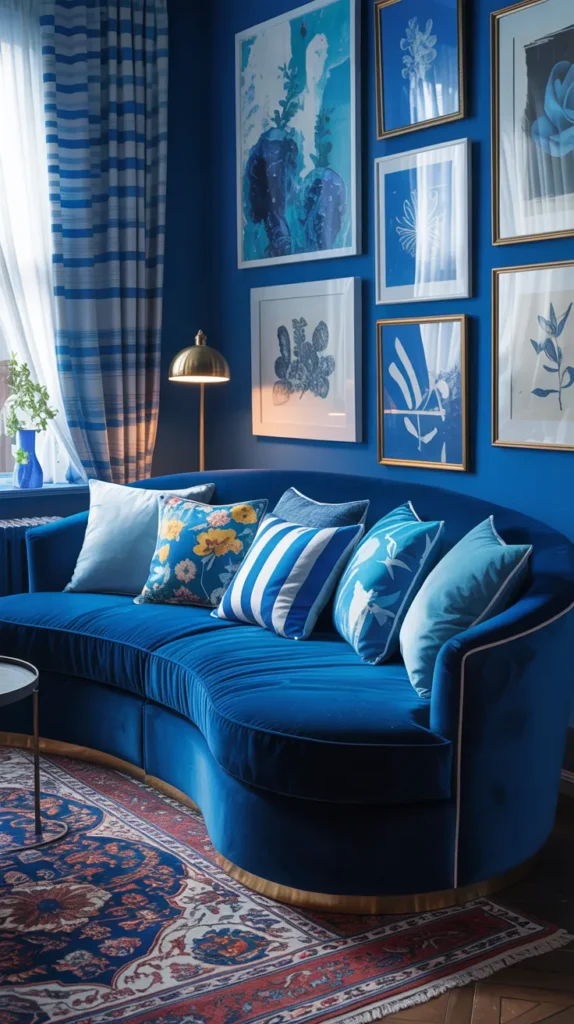
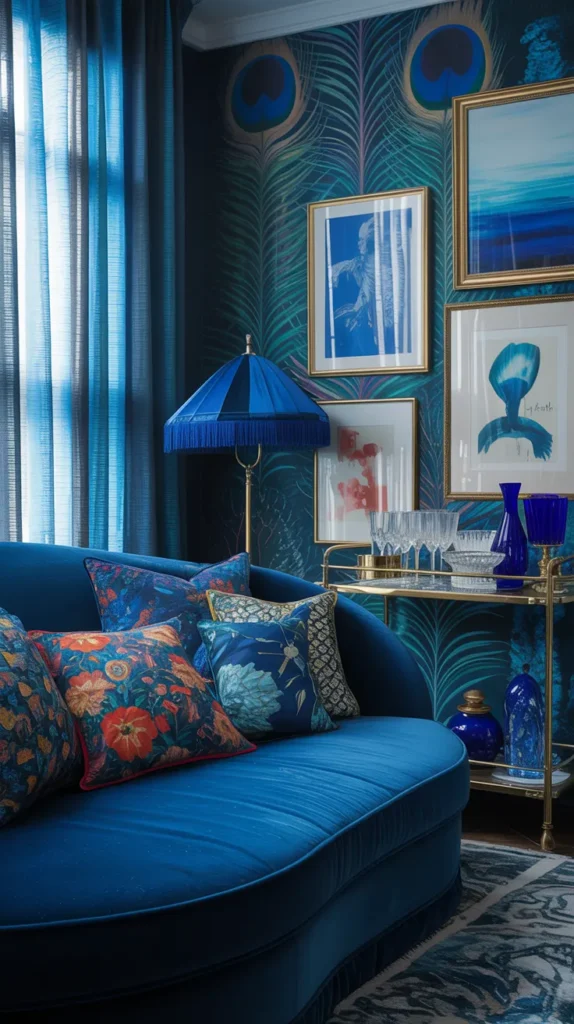
- Bold blue wallpaper with eye-catching patterns or textures
- Multiple patterns in varying scales that share blue as a common element
- Layered textiles in different blue tones and textures
- Art-filled walls that incorporate blue throughout
- Statement furniture pieces in rich blue tones (think blue velvet sofas or cerulean armchairs)
The secret to making maximalism feel intentional rather than chaotic is finding connecting elements. Blue serves this purpose beautifully, providing a through-line that ties diverse elements together. A blue chinoiserie vase, blue abstract art, and blue floral pillows might not seem like a natural combination, but the shared color creates cohesion.
I admire how blue maximalist rooms express such confidence and personality. They’re not trying to please everyone—they’re a bold statement of the owner’s taste and a celebration of living with things that bring joy, regardless of what minimalist trends might dictate.
Blue Modern: Sleek, Sophisticated, and Serene
Modern design, with its emphasis on clean lines and uncluttered spaces, takes on special elegance when rendered in blue. The color adds warmth and interest to a style that might otherwise feel too stark.
For a blue modern living room, consider:
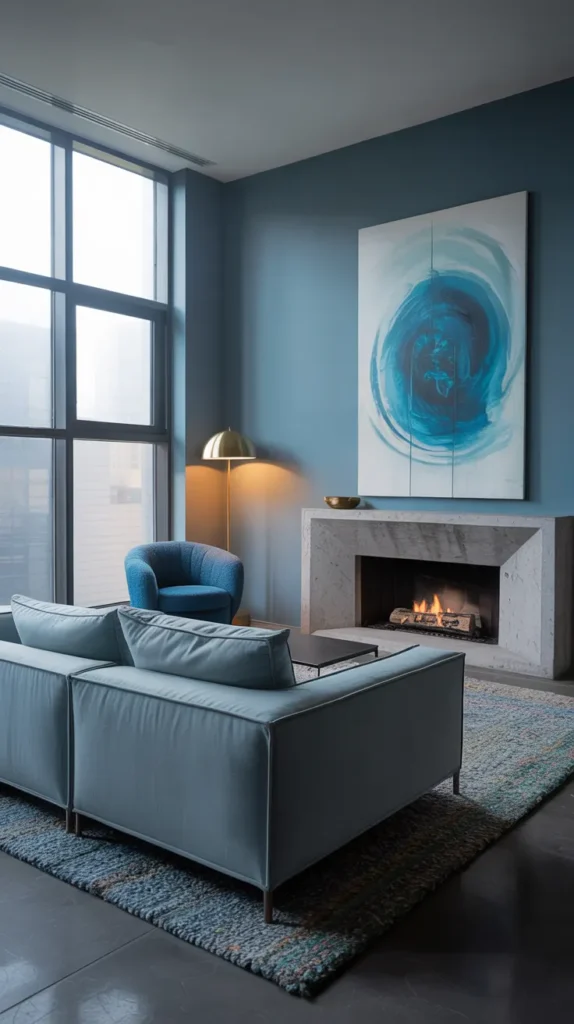
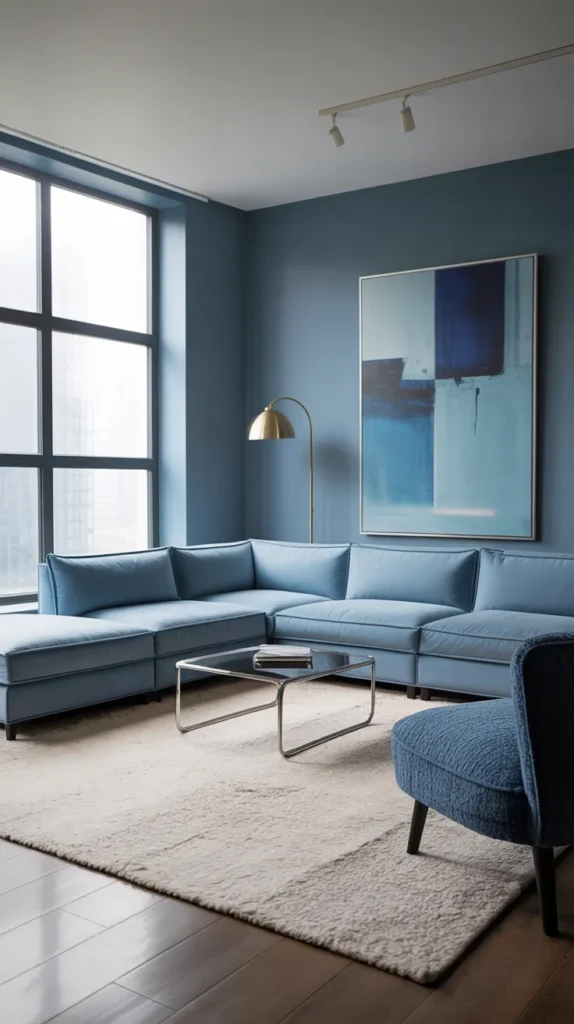
- A monochromatic blue palette with subtle variations in tone and texture
- Sleek furniture with simple silhouettes in blue upholstery
- Minimal but impactful blue accessories (perhaps a single oversize blue art piece)
- Strategic use of metal accents (chrome, brass, or blackened steel) to complement the blue
- Textural elements that add depth to the blue scheme (think blue boucle, velvet, or woven fabrics)
What works beautifully about blue in modern spaces is how it can soften the style’s potential coldness. A modern room done entirely in whites and grays might feel uninviting, but introduce blue, and suddenly there’s warmth and character.
For a sophisticated modern look, consider blues with complex undertones—perhaps a blue with hints of green or gray. These nuanced blues have depth that changes throughout the day as the light shifts, adding subtle interest to minimal surroundings.
Blue Scandinavian: Light, Bright, and Calming
Scandinavian design, with its emphasis on light and natural materials, takes on a particularly refreshing quality when blue enters the picture. Blue adds interest while maintaining the style’s characteristic serenity.
A blue Scandinavian living room typically features:
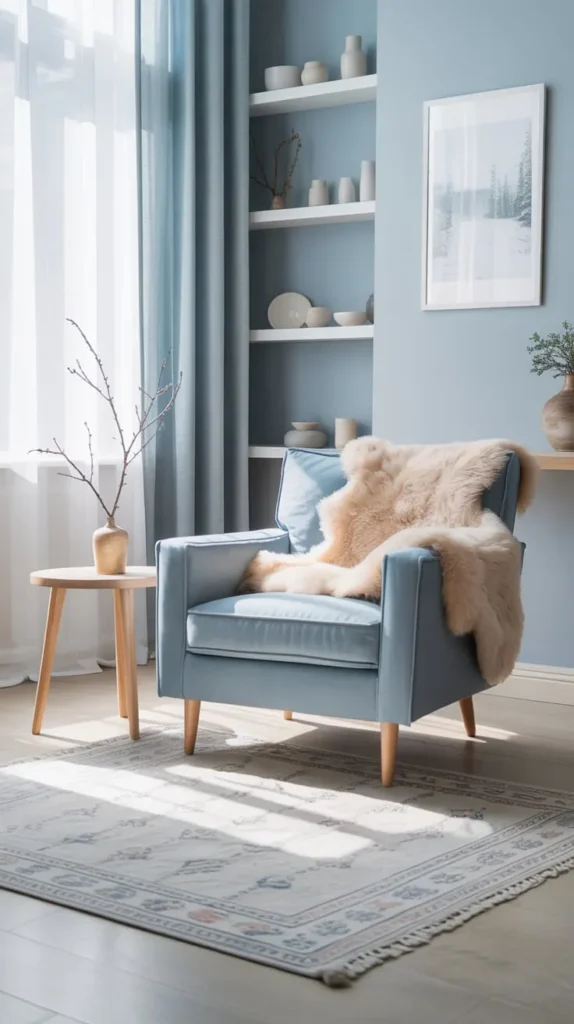
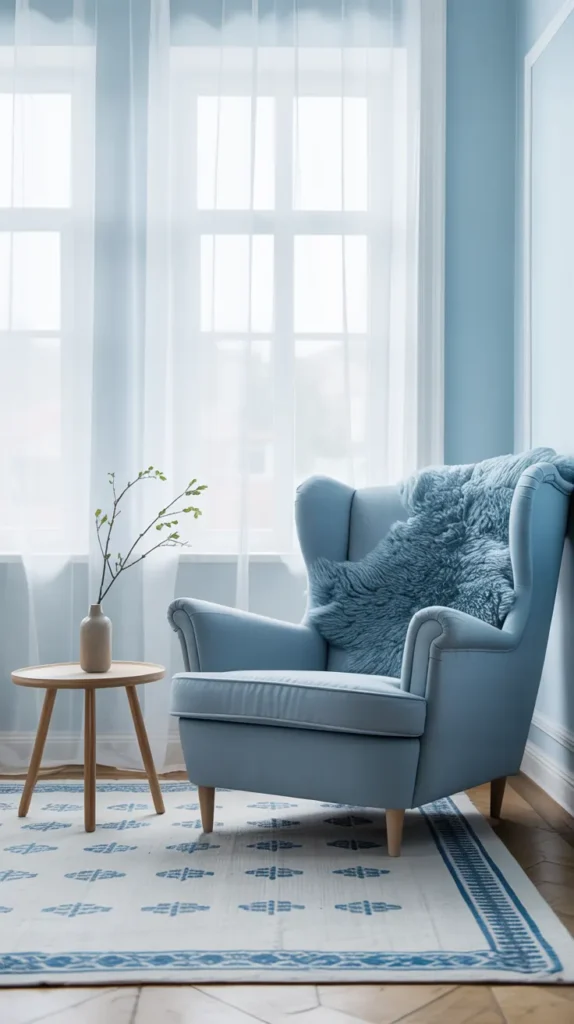
- Light blue walls that maximize brightness in the space
- Crisp white elements that create clean contrast with the blue
- Natural wood (particularly blonde woods like pine, birch, and ash)
- Cozy blue textiles that add warmth to the minimalist base
- Thoughtful blue accessories that serve both functional and aesthetic purposes
I’m particularly drawn to how Scandinavian spaces use blue to reference nature—the sky, water, and certain Nordic flowers. This connection to the natural world reinforces the organic quality that makes Scandinavian design so appealing.
For those concerned that Scandinavian style can feel too stark or cold, blue offers the perfect solution. A pale blue wall color or blue-patterned textiles add personality and warmth while maintaining the clean, uncluttered aesthetic that defines the style.
Blue Japandi: Where East Meets West in Perfect Harmony
Japandi style—the beautiful fusion of Japanese and Scandinavian design—creates some of the most serene living spaces imaginable. Add blue to this equation, and you’ll have a truly tranquil haven.
In a blue Japandi living room, look for:
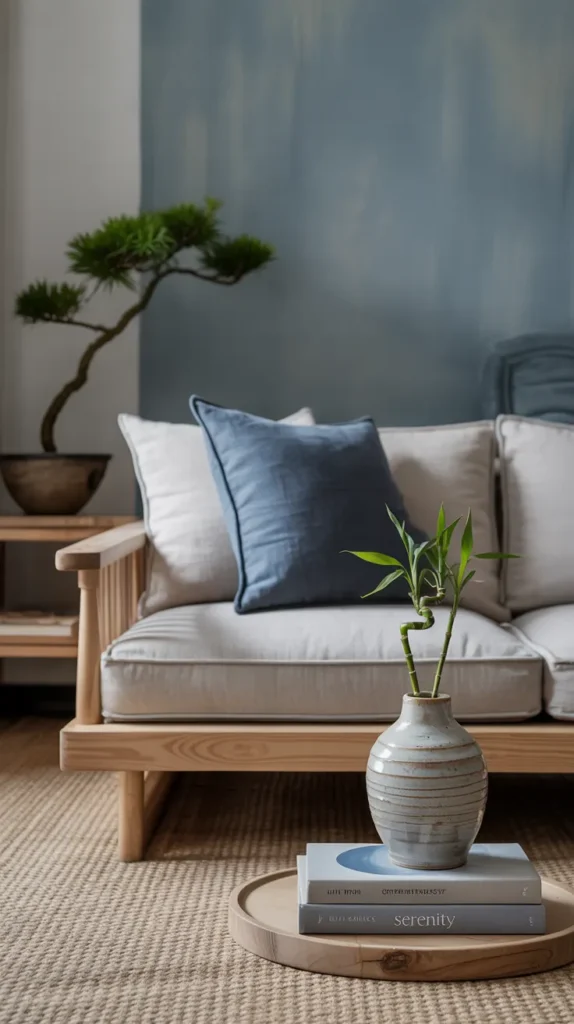
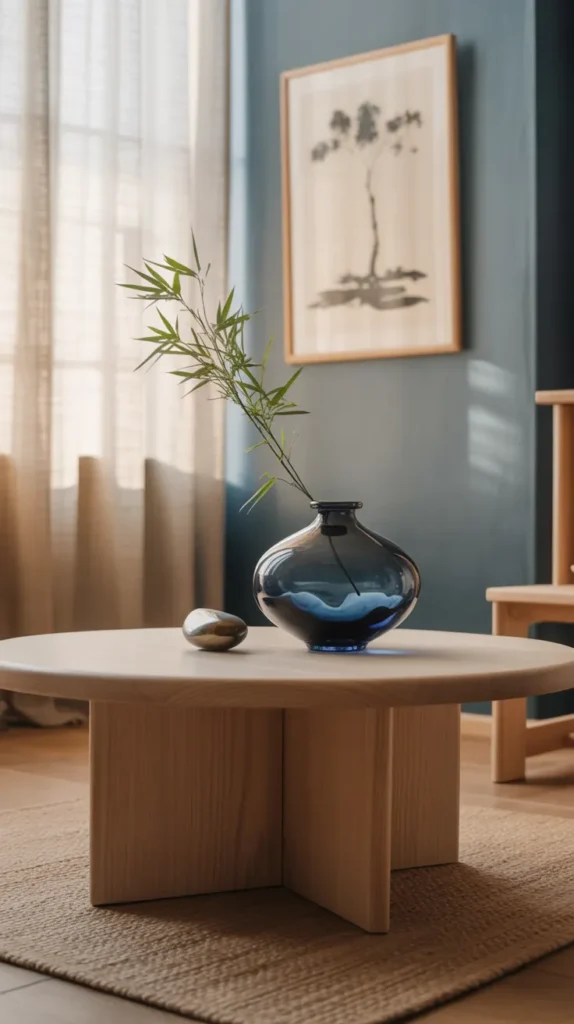
- A restrained palette of blues, typically in softened, nature-inspired tones
- Natural materials with minimal processing or finishing
- Carefully edited collections of blue ceramics or artwork
- Low-profile furniture that creates a grounded, peaceful feeling
- Mindful combinations of blue with neutral tones and natural textures
What makes blue work so beautifully in Japandi spaces is the color’s natural association with calm and contemplation. A carefully placed blue ceramic vase or subtle blue textile introduces gentle visual interest without disrupting the essential tranquility of the space.
I find that blue Japandi living rooms have a particular timelessness. Unlike more trend-driven styles, these spaces feel as though they could exist comfortably in any era—a quality that aligns perfectly with the enduring principles of both Japanese and Scandinavian design.
Blue Parisian: Elegant, Refined, and Effortlessly Chic
Parisian apartments are known for their elegant architectural features and masterful blend of old and new. Blue brings a particularly sophisticated touch to this already refined style.
A blue Parisian-style living room often includes:
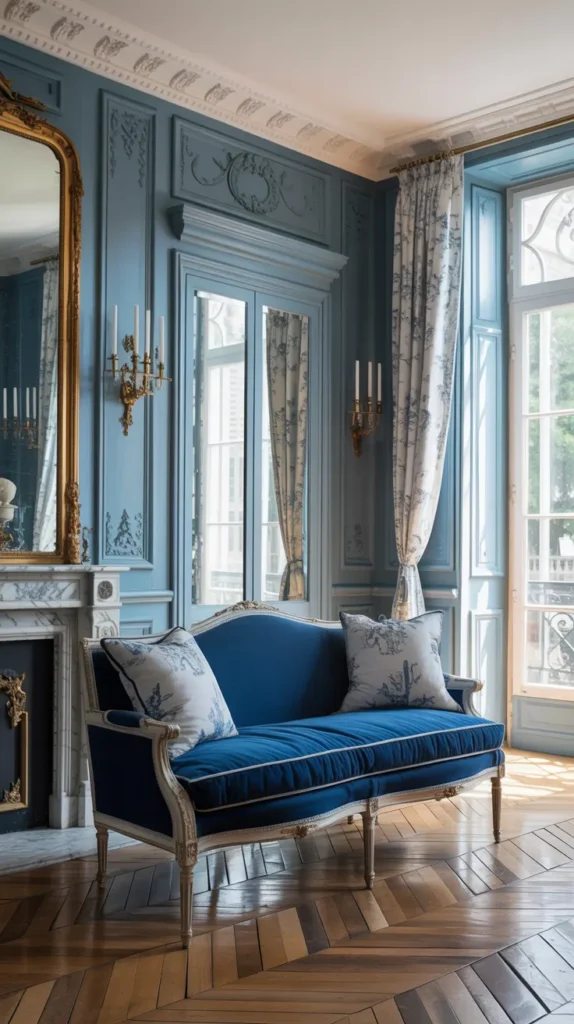
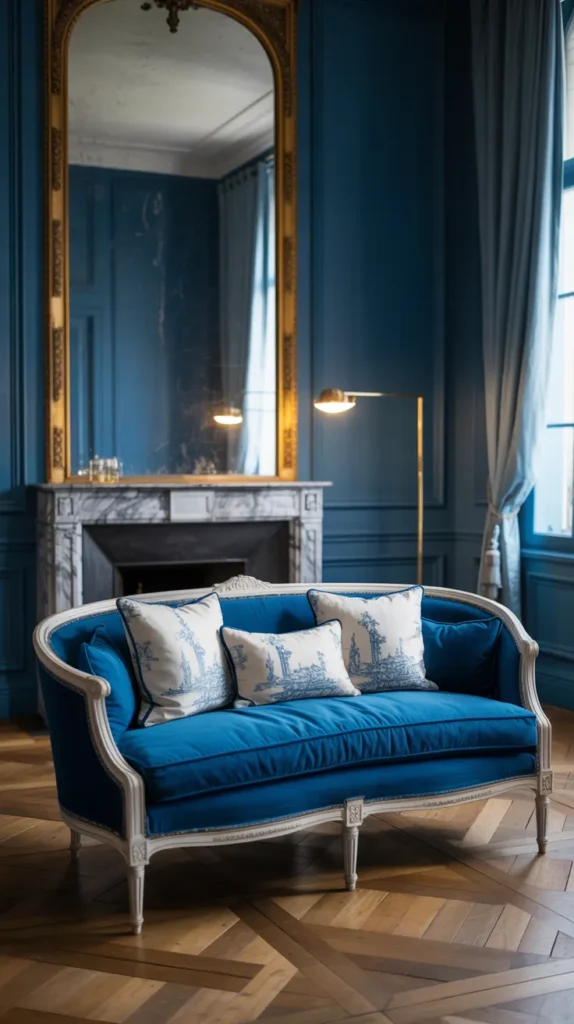
- Deep blue walls that highlight original architectural features
- A mix of antique and contemporary furniture, often featuring blue upholstery
- Classic patterns like toile or damask that incorporate blue
- Thoughtful combinations of blue with gold or brass accents
- Art and accessories that reference French culture and aesthetics
The magic of blue in Parisian interiors is how it bridges historical elements with contemporary living. A room with classic moldings painted in a rich navy feels both respectful of the past and thoroughly current. Similarly, antique furniture reupholstered in fresh blue fabrics takes on new life while maintaining its historic character.
For those who love Parisian style but worry about it feeling too formal or stuffy, blue offers the perfect contemporary update. It has the elegance the style demands but feels fresher and more livable than more traditional color choices.
Tips for Decorating with Blue (Without Overdoing It)
Whether you’re going all-in with blue or just wanting to incorporate touches of it, here are some tried-and-true tips for decorating with this versatile color:
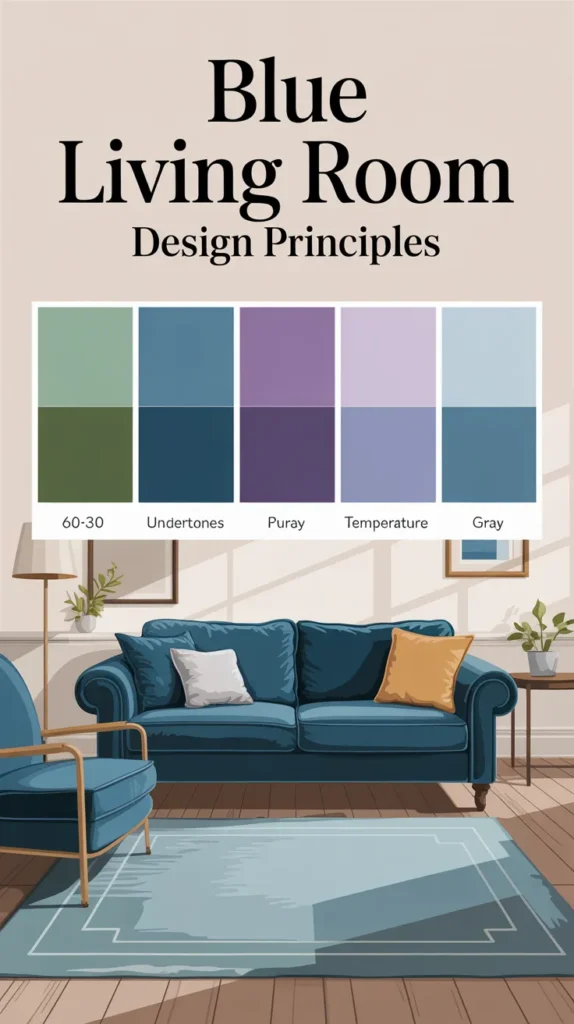
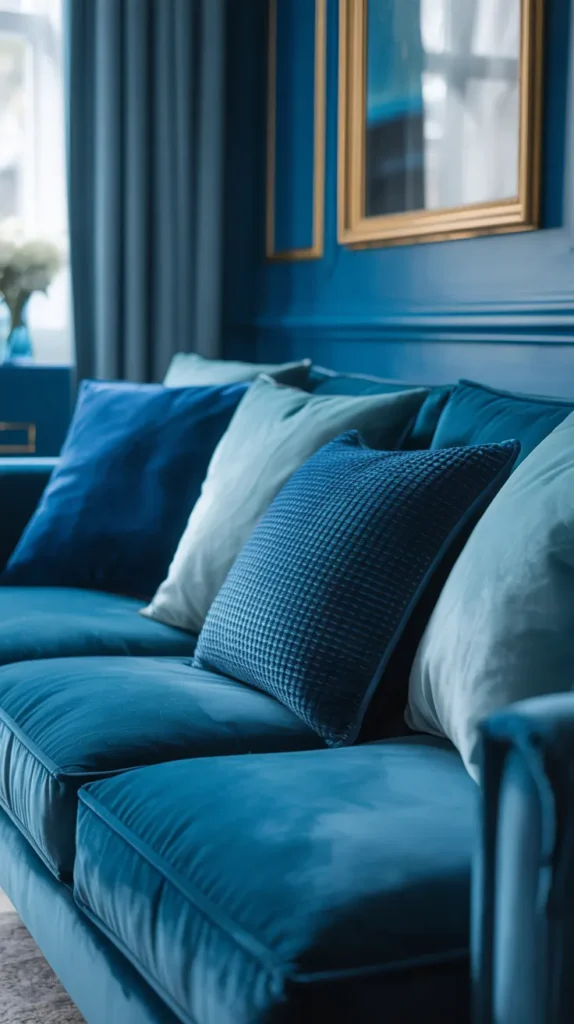
- Consider the undertones – Blues can have undertones of green, purple, or gray. Make sure the undertone complements the other colors in your space.
- Think about temperature – Warmer blues (those with a hint of red) create cozier spaces, while cooler blues (those with hints of green) can make a room feel more expansive.
- Test before committing – Blue can look dramatically different depending on the lighting in your room. Always test paint samples at different times of day before painting an entire room.
- Use the 60-30-10 rule – In a blue-focused room, consider using blue for 60% of the space (perhaps walls), a complementary color for 30% (furniture), and an accent color for 10% (accessories).
- Remember contrast – Even in a mostly blue room, incorporating contrast (through white, cream, or wood tones) helps keep the space balanced and prevents blue overload.
- Let texture do the talking – In monochromatic blue schemes, varied textures become especially important. Mix smooth, rough, shiny, and matte blue surfaces for added dimension.
- Bring in natural elements – Plants, wood, and natural fibers help ground blue rooms and prevent them from feeling too cold or theme-y.
The beauty of blue is its incredible range and adaptability. Whether you prefer a subtle hint of powder blue or a dramatic navy statement, there’s a blue living room idea that’s perfect for your style and space. The hardest part might just be deciding which shade of blue to use first! ✨
